How Can I Teach Art in a Pandemic?

"How to Change" is a limited series for “Southland Sessions” exploring the most critical issues facing Southern California culture makers in this pivotal historical moment. Each column will explore a question posed to a range of artists and culture workers, and include recommendations to address these concerns from a practical, action-oriented perspective.
Teaching Studio Art Online?
For the sixth installment of “How to Change,” I asked, "What has the pandemic and online education changed about the way we teach and learn studio art practice?" When institutions abruptly shut down in March, faculty pivoted to redesign their classes in the absence of facilities and ready access to materials. As we approach a full year of quarantine, I asked full-time faculty members at UCLA and Otis College of Art and Design to reflect on what has been working and what’s had to change about teaching studio art practice in the shift online.
For Candice Lin, who teaches ceramics and sculpture in the UCLA Department of Art, the spring 2020 quarter was a unique and unprecedented challenge. “The class that I had planned that I didn't get to teach was on surface design and glazing,” she recalls. These techniques require kiln access on campus that has been necessarily restricted since the shutdown. The replacement class, which Lin created in two weeks over spring break in late March, took an “expanded” approach to clay. “It was around ceramics and performance and unfired clay in the first half of the class. And then each week was also preparing the second half of the class, which was on pit firing and alternative firing methods” such as “raku,” a low-fire method from Japan.
Students were also encouraged to forage and refine their own clay found in the earth. "In the beginning of the class, I went over, how do you identify clay in the wild? And, especially in California, what are good practices in terms of where and how you can forage it? And then how to process it — there's a wet method and a dry method.” The students then pit fired the objects they made. “In the foraged clay,” Lin explains, “because it has a lot of fine rocks and sand, different things that make it a little tougher, it survives pit firing and raku much better because it's able to withstand the heat stress.” Lin gave lessons on plant-based glazes and led contextual conversations about resources and techniques. “Asian ceramics, a lot of their early glazes were plant-ash based,” she elaborates. “Whereas Egyptian ceramics were silica-based because they have a lot of sand.” These contrasts created openings to introduce a global narrative. “What I love is returning to how materials speak to place and culture and histories of trade,” Lin enthuses. “When you're digging [earth] out of a hillside, then you're like, ‘I got this at Mount Wilson, which just barely missed being burned down by wildfires.’ How does this connect to thinking about settler colonialism or ecological disasters and our human-created climate change and all these different questions that can come up?” Students were excited to take up these inquiries in their work. “I had a lot of students really respond to that framework and made really thoughtful pieces around environmental pollution, water scarcity,” she concludes.
Lin takes a philosophically broad approach to curriculum, mixing art history and critical theory with the study of materials. In the studio ceramics class that she still hopes to teach, “I was supplementing it with texts outside of ceramics. Anne [Anlin] Cheng's "Ornamentalism," her "theory of 'yellow woman'" around Asian femininity as being linked to the synthetic, she talks a lot about surface ornamentation in relation to that. And Krista Thompson's book “Shine,” thinking about Blackness in relationship to surface qualities of reflectiveness or shine.” Online, “We talked about Claymation,” Lin reports. “I talked about animators who had specifically used water-based ceramics-type clay instead of Claymation clay. Thinking about artists like Kim Noce or Jan Svankmajer who had mixed wedged oil into their water-based clay” to make it pliable enough for animation without requiring more expensive plasticine clay, Lin consistently emphasized to her students that artists still can make their work with what they have available in times of scarcity.
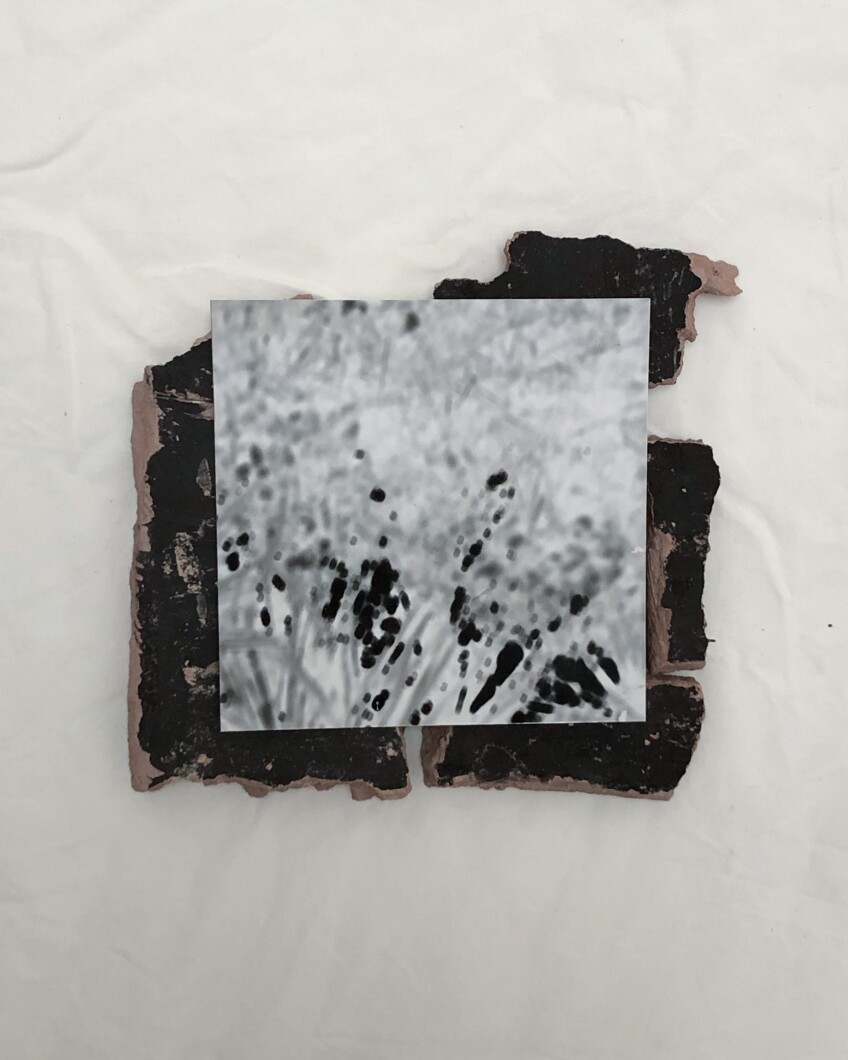



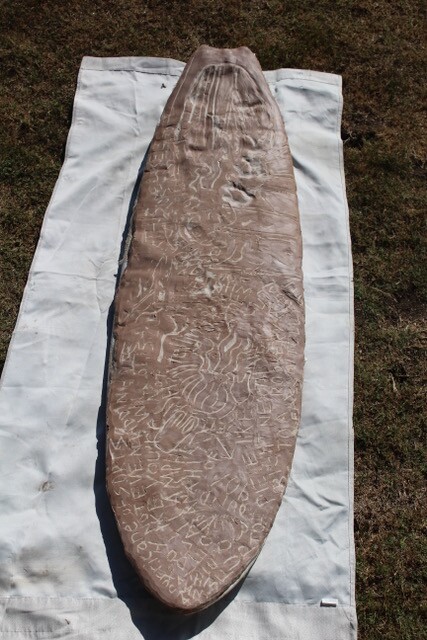

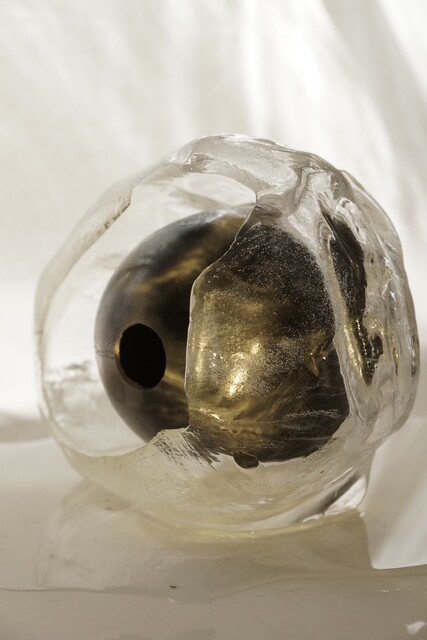

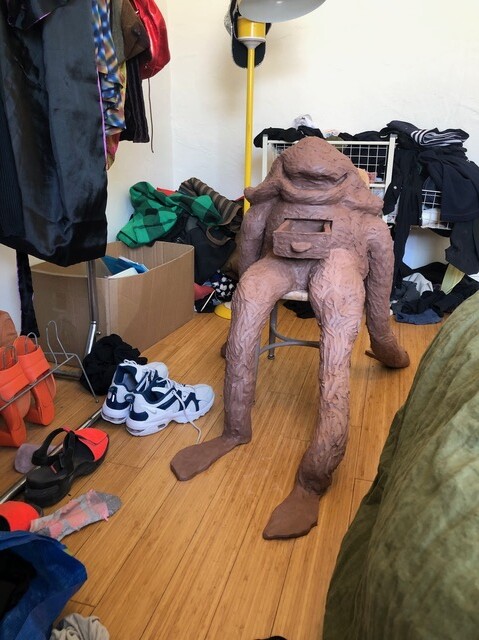



Michele Jaquis is Director of the Artists Community Teaching (ACT) program at Otis College of Art and Design, which offers minors in teacher credential preparation and community arts engagement to BFA art and design students. Her students go on to become K-12 teachers, museum educators, and community arts educators. The teacher credential preparation minor is “basically preparing BFA students to become educators,” says Jaquis. “What the Commission on Teacher Credentialing calls the Subject Matter and Art program, which allows Fine Arts majors who minor in Teacher Credential Preparation to waive the CSET in Art, the California subject exam for teachers. They're studying to be teaching artists and designers,” she continues, “some of whom will go on to get the credential, some of whom will just start teaching in venues that don't require a credential.” For Jaquis, online teaching was not entirely new. “I've always had that combination of, here's some online course materials that students can refer to outside of class, asynchronously. I never used that term,” she reflects. “And then here's the stuff we do in class. I would project things from the course management system in the live classroom situation,” she recalls.
Otis, a private college with more flexibility than a public institution like UCLA, initially intended to pursue a hybrid model that would allow students and faculty to use the campus in a socially distanced manner. "All the studio classes originally would have had a choice, with the idea that they would be blended, not completely on campus,” she reveals. While this ultimately didn’t happen, “they did set up a system so that students could come in and use the labs and shops by appointment.” Staff and faculty got creative when helping students adapt to the changes. “Technical Support Services, which runs all the labs and shops, put together tool and supply kits for various classes that they sent home to students or students could come and pick up,” says Jaquis. She describes how Joan Takayama-Ogawa, a professor in Creative Action and Product Design at Otis, set students up “with ceramic studios in whatever city they happened to be in, because of her vast network, so they could get stuff fired.” Other faculty set up areas of their homes and studios to film demonstrations, a task Jaquis was spared because her courses are more project-oriented. With the hourslong commutes that many faculty in the L.A. area have left behind, Jaquis reports that some Otis professors are considering remaining hybrid after the quarantine passes, herself included. Jaquis is also, like many, working with a young child who is attending school remotely, and until recently, was doing so without outside child care.
In addition to running the ACT program, Jaquis also teaches in the Creative Action program at Otis, “and those are all interdisciplinary collaborative classes that have a community partner” such as United Cerebral Palsy of Los Angeles in Culver City and the ECF West Side Art Center in Inglewood, with whom Jaquis works to teach her course called “Uniquely Abled." "Some schools refer to it as 'service learning,'" she explains. "It's more like social practice, social design, at least at the studio level." These partnerships had to be reconfigured with the shift to online. "So normally, my students go to ECF every Friday morning, and we're sharing studio space with them, and my students start to make friends and collaborate with the artists there. And then we have an exhibition in their Downtown Art Center Gallery." Given the health concerns of many clients of the two programs, “those two sites were only doing remote programming,” she laments. “And I decided I only wanted to teach remotely because my son would be home.” Conducting class on Zoom with close to 30 people including students and artists and staff from Otis, ECF, and UCPLA, “was really exhausting and chaotic but also really wonderful.”












Building connections organically proved to be more challenging in the online environment. "It was hard to get the relationship building that normally happens because we tour each other's campuses and studios, introduce the students and the artists at those two sites to each other, to their work." Using Google Slides for presentations and breakout rooms in Zoom was effective but less immersive than the in-person experience. Prior to the shutdown, these collaborations thrived on side-by-side creating. "You're going to share studio space with these other artists, and you can't sit next to an Otis student; you have to sit next to one of the ECF artists and just talk and hang out while you all make [art]." Online, the collaborative vibe was intermittent, as were students' internet connections. The ACT program's annual collaboration with Santa Monica Alternative School House (SMASH) was conducted using online tools like Padlet and Google Classroom. “The oldest students came up with these different learning objects like video instructions for projects that would be integrating arts into the other subjects” the SMASH students were learning, which the younger students then populated into the Padlet. The social, ineffable aspects of classroom learning, like walks to the next class or lingering to chat with the instructor are difficult to replicate in the limited Zoom environment.






Evelyn Serrano teaches art to kindergarten through eighth-graders at Los Feliz Charter School for the Arts (aka LFCSA, soon to be renamed California Creative Academy) in Los Angeles and teaches courses in arts activism and community engagement at CalArts. In the grade school environment, Serrano notes that correcting inequities among the student body has been the biggest challenge she and her colleagues have faced. "Access becomes a real big issue," Serrano details. "From technology challenges to access to paper and pen, the most basic materials," students and their parents are hard-pressed to recreate a functional learning environment at home. "Whether the students are in a single-parent household or they live in a household where parents are trying to have other folks in their safety bubble so that the student is traveling from one household to another." Differences that students would customarily leave at home are now apparent in the school environment. "Parents who are receiving communications in English, and they're non-English-speaking. I have students, second graders, who are taking care of siblings at home," she confesses. "So equity is always at the back of my mind in terms of the way I'm planning" for curriculum development or direct outreach to families.
While Serrano has had to address pervasive student challenges such as securing access to Wi-Fi and computers and distributing art supplies to families, she nonetheless hopes to emphasize the positive aspects of this uncommon experience. “We might have lost the space of a classroom studio,” she states, “but as teachers, we've gained access to the resources of home and the resources of community.” Attending to students' individual learning needs is crucial. “How do we support my friend who's a visual learner? My friend who really needs to work with peers? My friend who needs instructions repeated a couple of times?” she queries. “As teachers, the idea of differentiation is just so critical during these times.” Serrano circles back to concerns about equity and access. How do you make the content that you’re creating accessible for everyone?” With younger students, Serrano encouraged them to talk about their home life and how they could create a studio area for their creative practice within it. This engagement reversed the roles of student and teacher. Says Serrano, “My artists wore my creative hat.” She invited students to consider a box of supplies as a “studio in a box,” which might include conventional art materials but also household items like tin foil. With older students, Serrano has been leveraging their existing interest in media. “We've been doing a lot of more critical media literacy work as well,” she explains. “We have a lot of focus on photography, a lot of filmmaking.” These lessons help students make sense of what they see and consume while preparing them for future careers in media-driven professions.
Serrano and her colleagues utilize free platforms that can be accessed from any browser. At LFCSA, Serrano explains, “we do something cool, design-based learning.” Using design thinking strategies from industry, Serrano’s students solve real-world problems. “A lot of the sketching and a lot of the prototyping is happening on Tinkercad, which is a younger people’s version of AutoCAD,” a computer-assisted modeling environment that architects and prototype designers often use. “Tinkercad has been really amazing and super rich in terms of potential connections to math," she cheers. "You're playing with scales; you're playing with different kinds of shapes actually connecting or interacting with each other in a very interesting way." Jamboard is another favorite: “With the middle-schoolers, we do a lot of play-based assessment, they love competitive game-type things.” Other resources they employ include Soundtrap for audio recording and mixing, Flipgrid and Canva for peer-to-peer collaboration, and even the online game Minecraft.


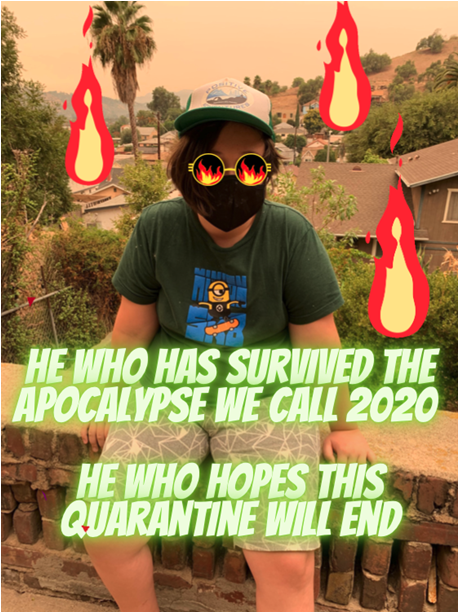



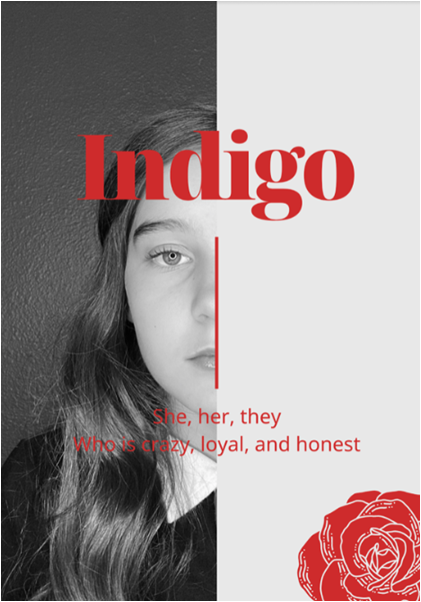

Online instruction involves a substantial amount of additional preparatory work on the part of instructors. Says Jaquis, "I think people don't really get how much time and energy — it's more effort to build out a quality online class because if you've been teaching the same topic for years and years, it's in your head. You don't even need notes to talk or do the demos; it's just part of your knowledge. "But then to have to give a talk or a demo, you have to record it, edit it, post it to the course management system or Google Drive, also provide notes to students, build out the slideshows…" Lin concurs. Especially for graduate students, who have lost access to studio facilities as well as classroom instruction during the pandemic, “we just didn't have the capacity to think through switching our classes to online and all the class prep that involves plus trying to do all these extra things” to make up for the loss, she admits. “But I think now that things are getting more in a flow, there's been the ability to try to try to put some of these things in place.” Technical assistance that used to come through peer networks has been regularized. “The lab manager at Broad [UCLA’s Broad Art Center] usually just works with the undergrads,” Lin explains. In the fall, he created tutorials for graduate students to learn safety procedures and basic techniques. “Because normally they would learn that from each other, a lot of the ceramics grads usually fire the non-ceramic grads’ work and advise them.” Students have been adaptable for the most part. “A lot of the ceramics grads changed media,” Lin explains. “One is working on this amazing garden project, which I guess you could say is expanded clay. Another one is making sculptural paintings. So people are finding ways to work.” Despite the challenges, there are aspects of online learning that support students’ attainment of a consistent, manageable daily art practice. "All the collaborative tools that we've been using would work really well in person," says Evelyn Serrano. "The idea of thinking of home and communities in the way we're thinking of them right now, as true resources for learning" is another aspect of the current environment that she would like to keep when school resumes in person.
While colleges have invested heavily in recent years in amenities for students such as residence halls and athletic facilities, the pandemic offers an incentive to return to the fundamentals of educational instruction by focusing on training students to develop professional practices that they can maintain independently outside of school. Online learning has given students an unprecedented window into the realities of their instructors’ daily working lives. The insights go both ways, as instructors now have a view into students’ homes and families. “There’s a different kind of intimacy than you would get in person,” says Jaquis, “but it really blurs the home-work-school separation that we normally experience.” “Everything is a classroom,” Serrano reports. “Everything and everyone could be part of the learning experience.” Says Lin, who maintains a full-time art career in addition to her full-time teaching job, “when I first was getting used to [teaching online], it was like, 'I have the same amount of time, but it's chopped up in a different way.' So instead of having a really long day where I'm physically there, I'd have a lot of little interruptions in the day, which makes it harder to actually get stuff done in the studio.” Modeling a balance between day job and studio practice, or between work and parenting, is part of the education that instructors now provide. “I think teachers are superheroes,” Serrano exclaims. “For educators, as educators, we need to create space for each other's well being.” Administrators and parents need to remember this advice as well. Says Jaquis, “One student years ago, as an alum, said to me that she'd wished more of her faculty had shown her examples of artists as parents. Well, I'm certainly doing it now; they're seeing it,” she chuckles. Faculty are having to lead by example through some of the biggest challenges, both logistical and financial, that higher education has ever seen.








